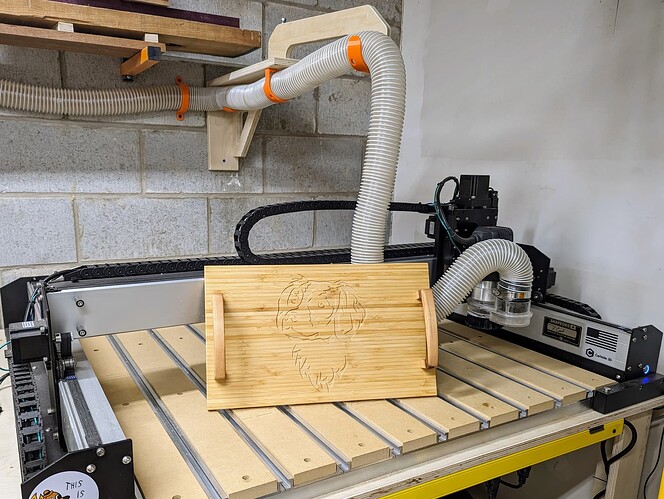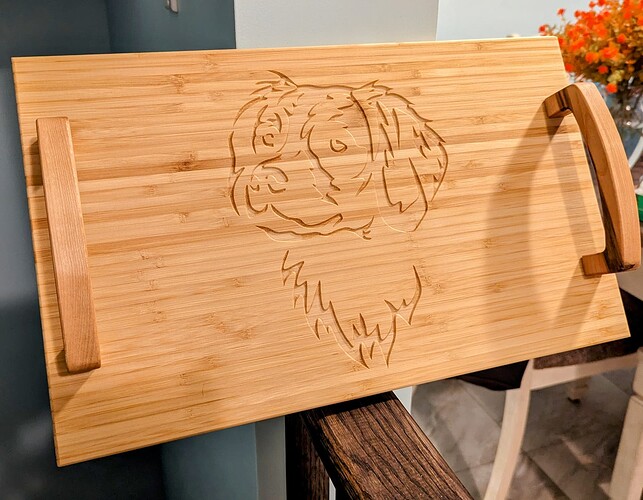A serving tray on which to present some treats for my father this Xmas. I’ll happily post the files, though design was done in Carveco Maker, so the designs are in .art and not an accepted attachment type. The toolpaths are in .nc (Shapeoko post-processor, mm), which will be attached at the end. Carving and shape cutting performed on my new-last-month Shapeoko 4 XXL.
My dad had a Brittany Spaniel when I was a kid and that dog went with him everywhere. His favorite dog, even 30 plus years later. He’s not very mobile and has some issues with his grip now, so a lap tray with easily grasped handles should also be useful for him.
The tray started out as an IKEA cutting board. The handles are from some scrap hard maple stock I milled down to 3/4" for this. I intentionally used the piece with a little extra spalting because I thought it could use the contrast.
- Trimmed the beveled edges and of course the IKEA logo off.
- Ran the v-carve using a 90 degree, 1/4" v-bit, 1/8" up-cut bit for roughing.
- Sanded back the original oil to clean bamboo, especially since these cutting boards are not very well-smoothed or flattened.
- Ran some maple over the jointer and cut to length, then surfaced the other side on the Shapeoko, using a 3-wing, 1" surfacing bit.
- Ran the profile cuts for the handles with a #201 (1/4" up-cut).
- Drilled 3/8" dowel holes into the handles and top of cutting board so no fastening was visible.
- Eased all edges of both the board and the handles on the router table using an 1/8" roundover bit.
- Sanded all surfaces to 180 grit.
- Glued handles to board with dowels and let glue set.
- Coated with food-safe mineral oil and let set for a couple hours, then wiped it down.
The main thing I learned on this one is that I have zero luck with Oramask. I intended to color-fill the v-carve, but my roughing pass shredded the masking beyond use. That’s both my main mistake and something I learned I need to find a better method for. No matter how clean thy surfaces I apply it to are, unless I am using only a v-bit, the stuff either pulls up or shreds on me.
I just realized I could reverse the tooling order on these. Well, I’ll give that a try for my next attempt using OraMask on a carve!
TrayHandles.nc (71.6 KB)
Spaniel_VCarve.nc (412.4 KB)


